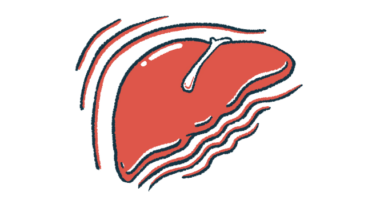6 months of Kaftrio treatment found to reduce inflammation in CF
Therapy, sold as Trikafta in US, may be option for certain CF patients

In people with cystic fibrosis (CF), six months of treatment with Kaftrio — sold as Trikafta in the U.S. — significantly reduced the blood levels of molecules called chemokines that are involved in inflammation, new research shows.
Noting that “exaggerated inflammation is a major driver of disease progression in cystic fibrosis,” the researchers found that the approved triple therapy “downregulated” or reduced levels of a certain group of chemokines.
“Targeting chemokines could potentially be a future therapeutic option for [people with CF] who display a persistent inflammatory phenotype,” the scientists wrote.
The study, “Plasma levels of chemokines decrease during elexacaftor/tezacaftor/ivacaftor therapy in adults with cystic fibrosis,” was published in the journal Heliyon.
Studying the effects of Kaftrio on inflammation in CF
CF is caused by mutations in the gene coding for the CFTR protein, which regulates the flow of chloride ions — the negatively charged part of certain salts — across the cell membrane. These mutations lead to the accumulation of thick and sticky mucus in various organs, such as the lungs and pancreas.
Kaftrio — the drug’s brand name in Europe — is a CFTR modulator containing elexacaftor, tezacaftor and ivacaftor. It works to improve the functionality of the CFTR protein in people with eligible CF-causing mutations.
While past data show that Kaftrio works to improve lung function in these patients, few studies have assessed the therapy’s effects on inflammation, a known hallmark of CF.T
“Effects on inflammatory processes are essential to our understanding of CF-associated inflammation and [it’s] important to identify [people with] CF who might benefit from additional anti-inflammatory treatment strategies,” the researchers wrote.
Now, a team of researchers in Germany evaluated the effects of Kaftrio on blood levels of chemokines — molecules involved in inflammation that act as attractants of immune cells.
Effects on inflammatory processes are essential to our understanding of CF-associated inflammation and [it’s] important to identify [people with] CF who might benefit from additional anti-inflammatory treatment strategies.
In total, they analyzed blood samples from 51 CF patients with mild to severe lung disease. These patients — 24 females and 27 males — had a mean age of 32. All but one patient had the F508del mutation, the most common CF-causing defect, in both copies of the CFTR gene.
The samples were collected before starting Kaftrio (baseline), and then again within three and six months of treatment. At the study’s start, 31 patients were being treated with Symkevi (tezacaftor/ivacaftor; Symdeko in the U.S.) or Orkambi (ivacaftor/lumacaftor).
After six months, the patients showed significant improvements in lung function, as shown by an increase of 12.7 points in ppFEV1, or the percent predicted forced expiratory volume in one second. Levels of sweat chloride, which reflect CFTR function, also improved, with significant reductions of 53.6%.
Treatment seen to reduce neutrophil-driven inflammation
The researchers further measured the levels of 12 chemokines, with all but one (called MIP-1alpha) being detected in more than 75% of samples at baseline.
As their levels may be influenced by other factors — the type of CFTR mutation, prior CFTR modulator therapy, and infection by Pseudomonas aeruginosa, the key bacterial agent in CF lung disease — the researchers reanalyzed their data, taking these factors into account.
The results showed that the levels of a particular chemokine, called eoatxin, were significantly lower in CF patients with prior use of a CFTR modulator therapy (mean 346.9 vs. 543 picograms per milliliter [pcg/mL]). No differences were seen between patients with and without chronic P. aeruginosa infection.
Overall, no strong correlation was detected between chemokine levels and clinical parameters at baseline.
Six-month treatment with Kaftrio significantly reduced the levels of four chemokines: MIP-3alpha by 68.2%, GRO-alpha by 17.7%, ENA-78 by 16.3%, and I-TAC by 3.4%. The reduction in I-TAC also was detected after three months.
While IL-8 levels were lower at both three and six months, this was not deemed statistically significant. The levels of the remaining chemokines remained stable throughout the study.
These findings suggest an effect of Kaftrio in lessening inflammation mediated by neutrophils, immune cells that act as first responders of the immune system.
Among the 17 participants without prior CFTR modulator treatment, median eotaxin levels were significantly decreased after six months of Kaftrio (459.75 pcg/mL vs. 543 pcg/m)L. Reductions in IL-8, MIP-1alpha and MIP-1beta were significantly associated with improvements in lung function.
Overall, Kaftrio “appears to affect a distinct group of chemokines that are predominately associated with neutrophilic inflammation, demonstrating [its] anti-inflammatory properties,” the study concluded.
Among study limitations, the team included not having samples from healthy controls and the overrepresentation of patients with the F508del mutation.









